Whew, it’s been quite a week! And now it’s late so I’ll just start with how my day began.
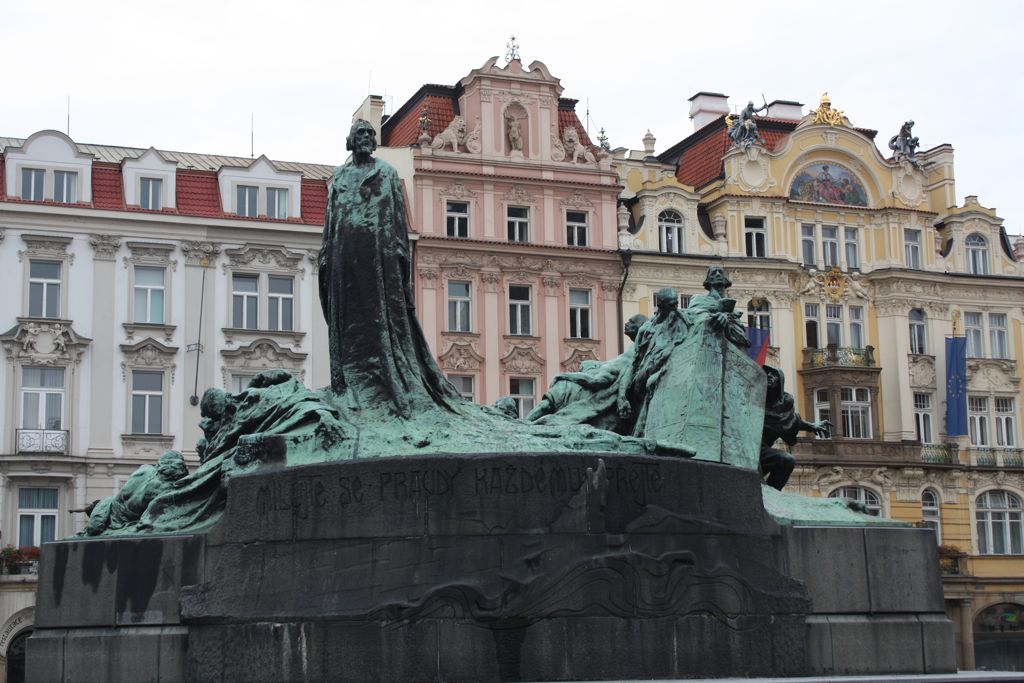
I woke up this morning and it was raining. The sky was gray and the weather was raw which seemed appropriate for the day I had planned for myself. I got up early this morning, grabbed some breakfast (whoops, no good pictures…I’ll try again tomorrow), and caught the subway into town.

At 9:30 I boarded the bus for my tour of Terezin (or Teresienstadt). I had no idea what to expect from a trip like this. I wasn’t sure if it was going to be emotional, exhausting, shocking, or a something completely unexpected. It turns out it was a little of all of them, but not for the reasons I had anticipated.
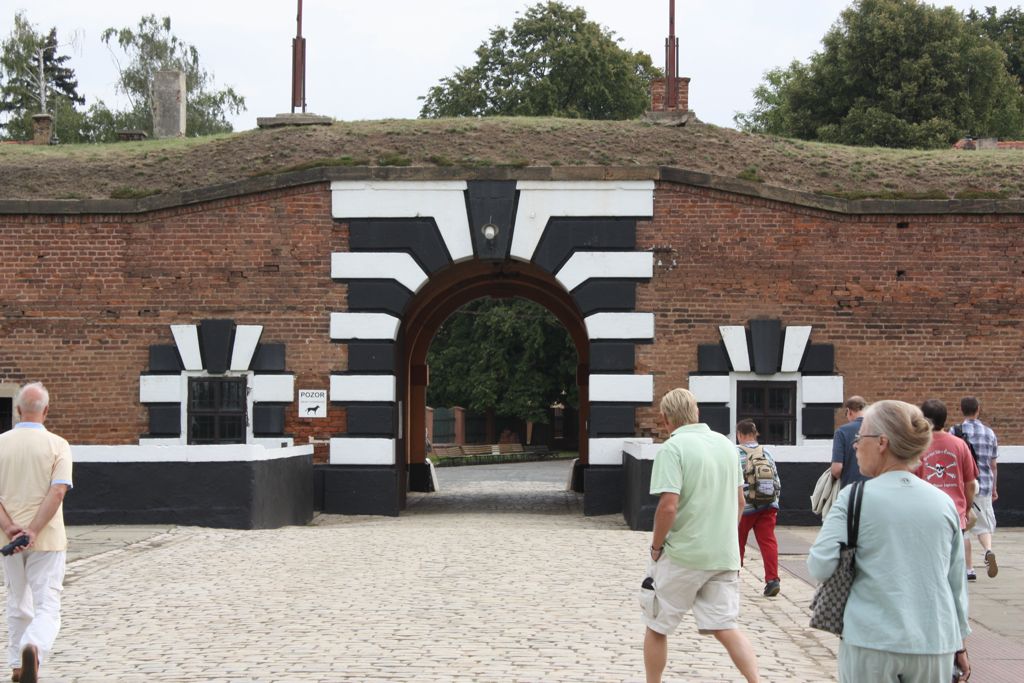
When we first arrived in Terezin (Terezin is a town about an hour outside of Prague), they took us to the Small Fortress. The Small Fortress has the distinctive black and white entryway that is often in photos. Terezin was named for Maria Theresia (remember her?) way back in the 18th century. It was originally built as a military fortress by the Habsburg monarchy. During WWI it was used as a prison. All of this made it very convenient for the Nazis during WWII.
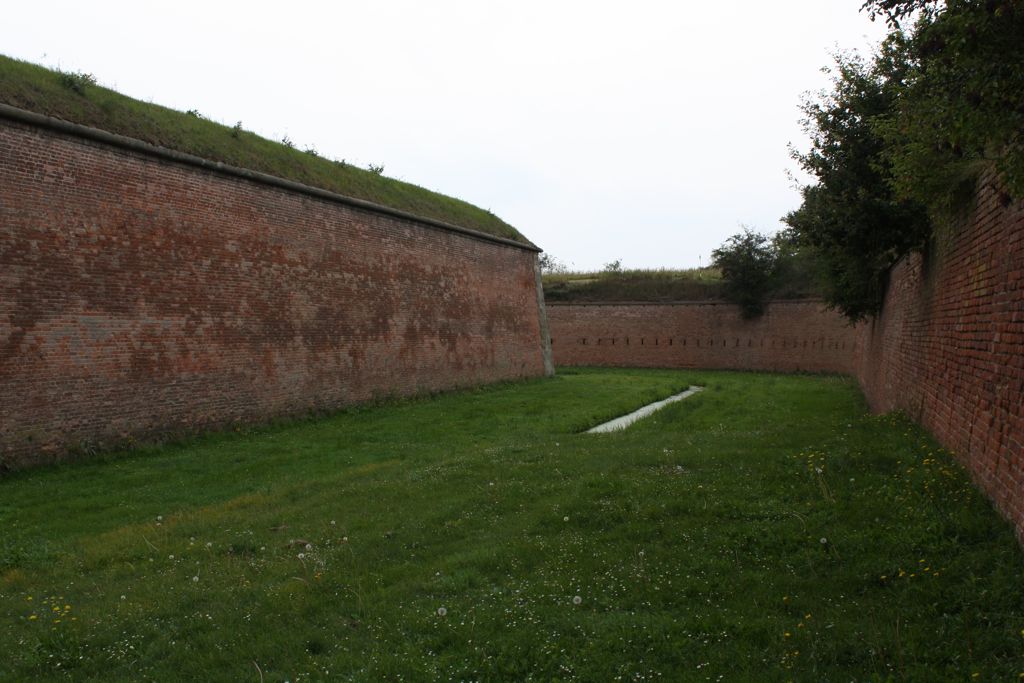
A tour guide took us around the Small Fortress. The Small Fortress was used mainly to imprison Allied POWs during the war. It is a separate compound, away from the Jewish ghetto. I did not realize that there was a separate prison and ghetto in Terezin. But conditions in the prison were inhumane as well. Here prisoners were kept in tiny cells, often 80-90 per room and forced to do hard labor.
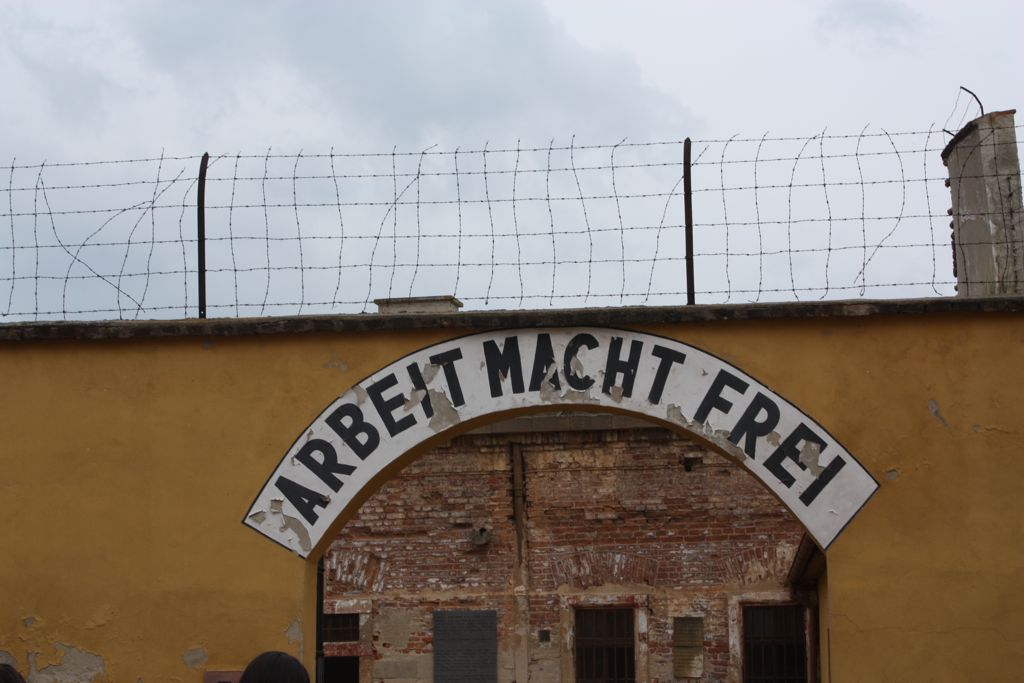
Through the entryway into the main courtyard area of the prison are the words “Arbeit Macht Frei” which translate into “Work Will Free You.” This phrase was written on many concentration camps. Inside the courtyard we got to a see a propaganda barbershop, the living quarters of the commanding officer, and the one bathroom in the entire complex. Our guide did a great job explaining what each room or building was used for and giving us a little bit of background of the entire place.
We also watched a propaganda film created by the Nazis to show what a great place Teresianstadt was. In the video, Jews are seen playing soccer, enjoying concerts, and living what appears to be a rich and comfortable life within the ghetto walls. However in reality, living conditions were atrocious, with overcrowding, hard labor, and little food.
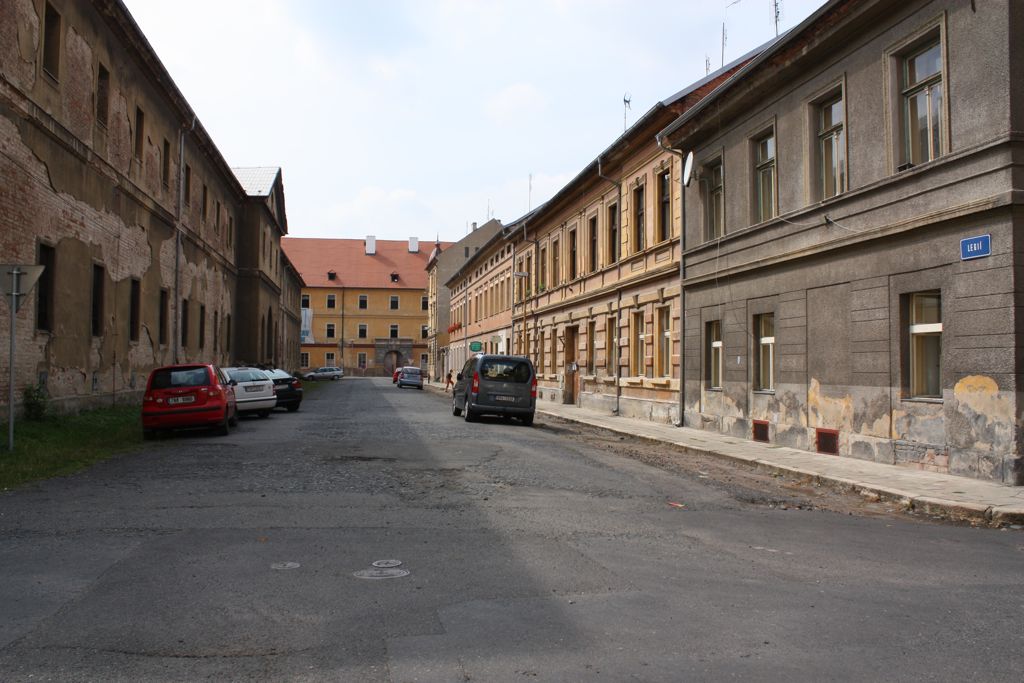
The town part of Terezin was used by the Germans as a ghetto. Jews from Czechoslovakia, Denmark, Austria, and Poland were brought to Terezin on the way to death camps in Eastern Europe. The Jews created their own community within the walls. Today, Terezin is a town. It’s not a vibrant town, not even a bustling one. In fact, in was largely damaged by floods in 2002 and is struggling to regain its footing.
I guess this is what surprised me the most. The history of the Terezin concentration camp in the town has been compressed into two small buildings. It all seemed very “matter of fact” to me. One building gives a brief history of the Holocaust and shows the practical side of life in the ghetto. The other building is dedicated to the arts and culture of the ghetto, featuring music, paintings, writings, and children’s poetry and drawings. But being there reminded me of a song I learned in Hebrew school. The lyrics are a poem written by Paval Friedman who lived in Teresienstadt.
- The last, the very last,
- So richly, brightly, dazzlingly yellow.
- Perhaps if the sun’s tears would sing
- against a white stone. . . .
- Such, such a yellow
- Is carried lightly ‘way up high.
- It went away I’m sure because it wished to
- kiss the world good-bye.
- For seven weeks I’ve lived in here,
- Penned up inside this ghetto.
- But I have found what I love here.
- The dandelions call to me
- And the white chestnut branches in the court.
- Only I never saw another butterfly.
- That butterfly was the last one.
- Butterflies don’t live in here,
- in the ghetto.

That’s enough for tonight. I’ll try to post the rest of my day in the morning.

Comments
I would like to get from where you took this?